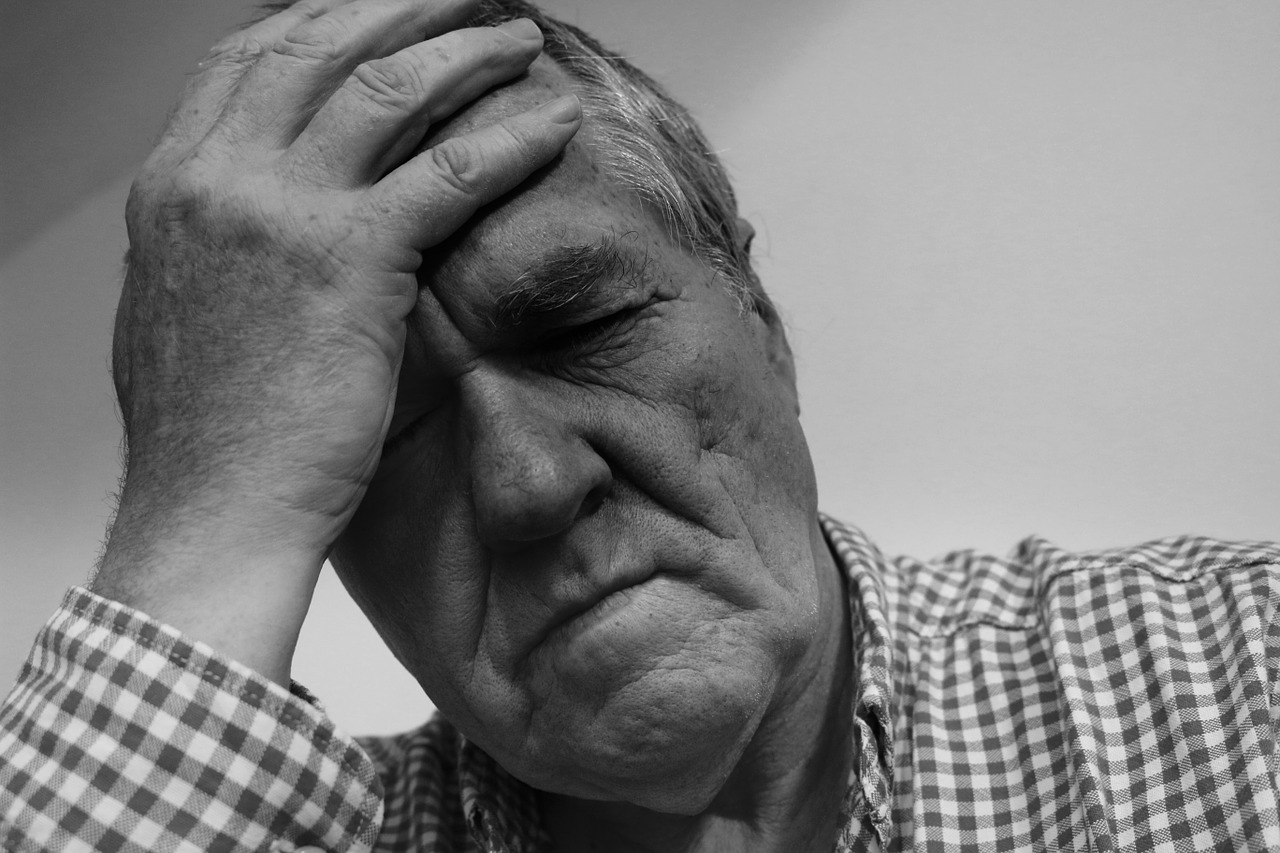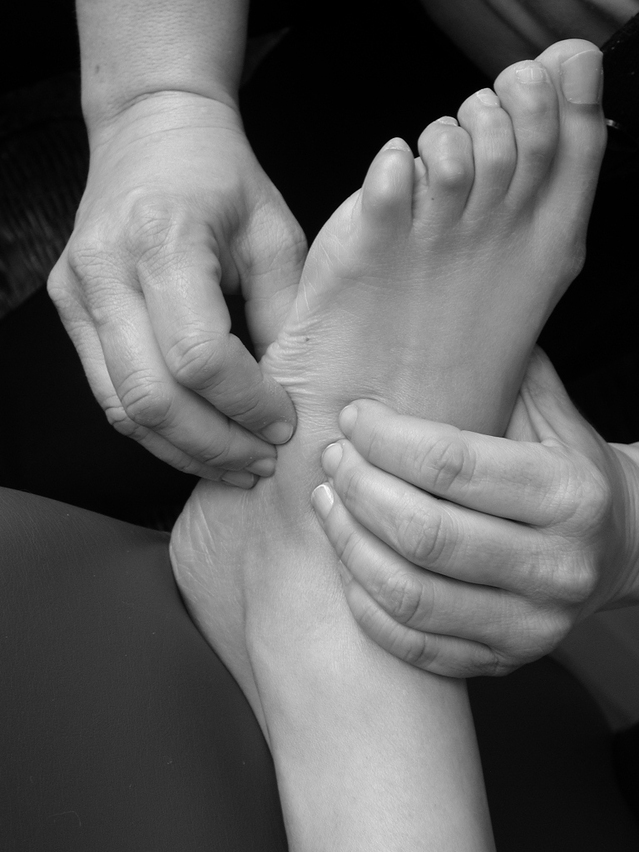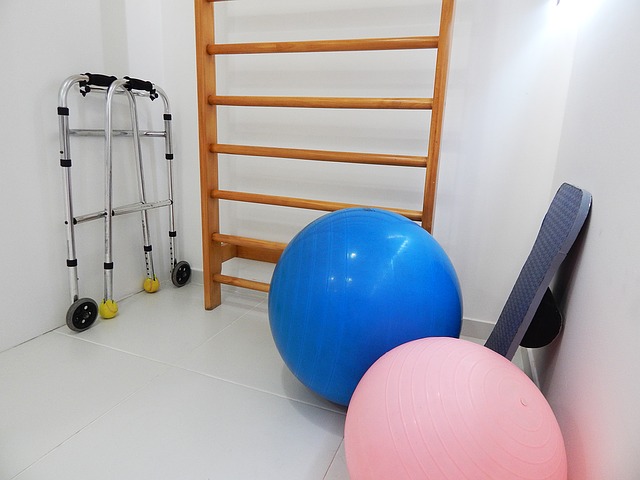Latest News and Information
Physical Therapy in Cheyenne for Neurological Disorders
October 26, 2016
Neurological disorders can inflict you with severe pain, impair the movements of your body, and prevent you from functioning properly while fulfilling social or professional tasks. However, physical therapy sessions can treat your neurological condition without the use of dangerous medications or expensive surgeries. If you are experiencing a neurological disorder, you should learn about the beneficial neurological treatments that the best Wyoming physical therapists can provide.
Contact North Platte Physical Therapy to treat your neurological disorder. Our expert staff has accrued a prestigious reputation throughout the Wyoming and Nebraska areas for providing superior physical therapy and neurological treatment services. We can provide you with the full support that you deserve, we can customize a treatment plan that is most effective for your condition, and we would be glad to implement a physical therapy program that can help improve the proper functioning of your body and maximize the productive quality of your life. Â Â
Read More...
Movement Disorders
Your local physical therapy services can treat many movement disorders. Movement disorders often diminish your ability to flex, rotate, or utilize your muscles and limbs effectively. Parkinson’s disease is a movement disorder that is commonly treated by physical therapy experts. The experts can customize stretching routines and exercise programs to help alleviate the symptoms of the condition and restore the proper functioning of your body. For instance, aerobic exercises can increase the circulation of blood and oxygen throughout your body, reduce the pain and stiffness in your muscles, and improve the mobility and strength of your limbs. Therapists can also use technological modalities that can generate electrical currents to relieve the pain and increase the strength of your muscles. Additionally, therapists provide treatments for many other movement disorders, including Ataxia, Tourette syndrome, MSA, PSP, Dystonia, and Wilson’s disease.Balance Disorders
You can also treat balance disorders with physical therapy sessions. Vestibular or balance disorders are usually caused by damage to your inner ear, for organs inside the ear help convey information to the brain regarding body position and balance. Several detrimental symptoms accompany balance disorders, including frequent imbalance, risk of falling, severe vertigo, and extreme dizziness. However, premier Wyoming physical therapists can implement vestibular rehabilitation therapy treatments to help you overcome balance disorders. The experts can show you efficacious techniques that can help you maintain a stable posture when standing, utilize a safe gait while walking, and avoid falling while performing your daily routines. Many physical therapy exercises can also help treat the secondary vestibular disorder symptoms of vertigo and dizziness. For example, compensation exercises teach you to use other senses to maintain your balance, habituation exercises help you eradicate dizzy spells in different environments, and gaze stabilization exercises help you keep your vision focused when your head is rotating. ÂStroke
Physical therapy can also help alleviate symptoms and help you recover from strokes. Strokes are caused by the blood flow being suddenly obstructed from accessing the brain, which damages the brain cells that are deprived of oxygen. After the stroke, you can often experience debilitating symptoms that prevent you from being able to move various body parts. Strokes can impair coordination, hinder muscle control, and restrict body movements. While these symptoms can initially prevent you from functioning properly, physical therapy experts can treat these symptoms and help you rehabilitate from the condition. Many exercises can help alleviate stroke symptoms. The experts can guide you through strength, flexibility, and aerobic exercise routines that help restore proper body mechanics. Studies indicate that physical therapy exercise routines can substantially help stroke survivors regain muscle strength, limb coordination, and body movement control.Contact North Platte Physical Therapy to treat your neurological disorder. Our expert staff has accrued a prestigious reputation throughout the Wyoming and Nebraska areas for providing superior physical therapy and neurological treatment services. We can provide you with the full support that you deserve, we can customize a treatment plan that is most effective for your condition, and we would be glad to implement a physical therapy program that can help improve the proper functioning of your body and maximize the productive quality of your life. Â Â
What to Expect on Your First Visit to North Platte Physical Therapy
October 19, 2016
Are you wondering what will happen at your first physical therapy appointment, what to bring, who will you see, what paperwork will be involved? If you have never been to our offices or to any physical therapy, you might be curious about what to expect. Here at North Platte Physical Therapy, we want all your experiences at our clinics to be easy, straight-forward, and comfortable. Rest assured that we will do our best to welcome you, make you feel at ease, and get you on your way to restored health in a timely manner. To help us respect your time and also prepare you for the experience, here are a few things to know about your first visit with us.
Be prepared to answer questions such as:
Thank you for choosing North Platte Physical Therapy. We suggest you browse through our common physical rehabilitation questions page, and check out our locations page for directions to the facility that is most convenient for you. If you have any questions, please do not hesitate to contact us.
Additional References:Â http://www.professionalpt.com/patient-center/first-visit/
Read More...
Before Your Visit
Before your visit, please download and print the intake forms, fill them out at your convenience, and bring them with you to your first visit. This will save you time in-office, and you can take as much time as you need to fill them out. See our first time physical therapy visit page and click on the appropriate forms button to correspond with your location. Also bring your doctor’s referral with you (your prescription for therapy) and any relevant diagnostic reports you may have (x-ray, MRI, etc.).During The Appointment
For your appointment, wear comfortable clothing that will allow the physical therapist access to the body part for which you are being seen. We suggest that you arrive 10 – 15 minutes before the start of your first scheduled appointment to complete the registration process. When you arrive, we will take your filled-out paperwork, any diagnostic reports, and get a copy of your insurance card and driver’s license. After that, the first part of your initial evaluation involves an interview, where you will meet with your therapist to discuss your medical history, the story of what brings you into therapy.Be prepared to answer questions such as:
- What types of symptoms are you experiencing?
- How long have you been experiencing these symptoms?
- What aggravates and eases these symptoms?
- How did it start?
Treatment and After
After your interview and evaluation, we will explain our assessment of your condition and your individual plan of care. After that, we will begin your treatment. And since you will only spend two to three hours a week receiving treatment with us, follow-through with your home exercise program will help you attain your goals much faster. After your appointment, please remember to check in with our receptionists on your way out. They will coordinate your follow-up treatments.Thank you for choosing North Platte Physical Therapy. We suggest you browse through our common physical rehabilitation questions page, and check out our locations page for directions to the facility that is most convenient for you. If you have any questions, please do not hesitate to contact us.
Additional References:Â http://www.professionalpt.com/patient-center/first-visit/
North Platte Physical Therapy Specialists Answer the Question: What is the Graston Technique?
October 12, 2016
The Graston Technique is a highly effective treatment in the world of physical therapy, helping to decrease pain and improve function and mobility. A form of the IASTM Technique (Instrumented Assisted Soft Tissue Mobilization), Graston Technique therapy involves a set of stainless steel instruments in varying sizes being expertly combed over painful areas until the adhesions causing the pain are broken down and absorbed into the body.
As part of the healing process, our bodies attempt to repair wounded areas by creating internal scar tissue similar to the scar you see when you scrape your skin. With age and injuries, you may experience dysfunction and pain in your body. Overuse, time, and injuries can lead to a buildup of fibrous scar tissue. This replacement tissue lacks the strength and flexibility of healthy tissue, and it can cause pain. The Graston treatment is a procedure that allows us to easily detect and treat areas of scar tissue in muscles, tendons, and ligaments that may be reducing your range of motion and causing pain.
When it comes to physical therapy for pain, the Graston treatment provides many benefits. The instruments used as part of the Graston Technique allow us to follow the kinetic chain of connecting tissue, effectively uncovering the cause of the problem, allowing us to treat the precise problem area. The Graston Technique has been effective in the treatment of:
When scar tissue binds with your normal tissue, a blood supply is developed. So as restrictions are released from healthy tissue, you may notice some skin redness. In addition, you may experience soreness and discomfort after your first Graston treatment session. Not to worry though, this is a sign that restrictions have been released. Your soreness will typically fade after 48 to 72 hours and can be minimized with gentle stretches and ice. It is also recommended that light yoga be used after treatment, if necessary.
You don’t have to live with chronic pain and discomfort anymore. If you are interested in seeing if the Graston Therapy can help you, please feel free to contact any of our clinics. We are your premiere therapy group serving multiple communities in the state of Wyoming. We serve the communities of Wyoming and Nebraska with 22 clinics offering a full range of services and an excellent staff. Check out all of our physical therapy rehabilitation locations and call us to set up an appointment.
Additional Resources:Â http://advancedorthosports.com/discover-the-graston-technique/
Read More...
As part of the healing process, our bodies attempt to repair wounded areas by creating internal scar tissue similar to the scar you see when you scrape your skin. With age and injuries, you may experience dysfunction and pain in your body. Overuse, time, and injuries can lead to a buildup of fibrous scar tissue. This replacement tissue lacks the strength and flexibility of healthy tissue, and it can cause pain. The Graston treatment is a procedure that allows us to easily detect and treat areas of scar tissue in muscles, tendons, and ligaments that may be reducing your range of motion and causing pain.
When it comes to physical therapy for pain, the Graston treatment provides many benefits. The instruments used as part of the Graston Technique allow us to follow the kinetic chain of connecting tissue, effectively uncovering the cause of the problem, allowing us to treat the precise problem area. The Graston Technique has been effective in the treatment of:
- carpal tunnel syndrome
- muscle strain
- post-surgical scarring
- cervical pain
- plantar fasciitis
- lower back pain
- post-fracture pain
- painful scars
- de Quervain’s syndrome
- fibromyalgia
- IT band syndrome
- joint sprain
When scar tissue binds with your normal tissue, a blood supply is developed. So as restrictions are released from healthy tissue, you may notice some skin redness. In addition, you may experience soreness and discomfort after your first Graston treatment session. Not to worry though, this is a sign that restrictions have been released. Your soreness will typically fade after 48 to 72 hours and can be minimized with gentle stretches and ice. It is also recommended that light yoga be used after treatment, if necessary.
You don’t have to live with chronic pain and discomfort anymore. If you are interested in seeing if the Graston Therapy can help you, please feel free to contact any of our clinics. We are your premiere therapy group serving multiple communities in the state of Wyoming. We serve the communities of Wyoming and Nebraska with 22 clinics offering a full range of services and an excellent staff. Check out all of our physical therapy rehabilitation locations and call us to set up an appointment.
Additional Resources:Â http://advancedorthosports.com/discover-the-graston-technique/
Pediatric Physical Therapy: Cerebral Palsy Treatment for Children
October 5, 2016
Cerebral Palsy conditions are neurological disorders that can impair the ability of individuals to develop properly and function independently. The condition impacts the part of the brain that controls muscle movement, as a result the patients often encounter difficulties coordinating their limbs, moving their bodies, and performing daily tasks. However, research demonstrates that physical therapy treatments can very effectively improve the movement skills and independent capabilities of children and adults with cerebral palsy. If your child lives with cerebral palsy, you should learn about the physical therapy treatments that the premier Wyoming physical therapists can provide at North Platte Physical Therapy.
Contact North Platte Physical Therapy to treat your child’s cerebral palsy condition. Our expert staff has earned a prestigious reputation for providing superior physical therapy services and for satisfying customers throughout the Wyoming and Nebraska areas. We can provide your child with the personalized support he deserves, we use the best treatment techniques available, and we would be happy to implement a treatment plan that can maximize the level of independence and quality of life that your child enjoys. Â
Read More...
Customized Treatment
The top Cheyenne physical therapy services can provide comprehensive treatment for children with cerebral palsy. Most experts emphasize the importance of having a physical therapist work with your child for an extensive period of time as he or she develops through childhood. For instance, the therapists can provide ideal treatments that are conducive to the various stages of infancy, early childhood, and adolescence. Having the same physical therapist over the years helps improve the efficacy of the treatment in many ways. The consistency enables the therapist and your child to keep the progress flowing efficiently throughout childhood. As the needs of your child change, the therapist will already know your child’s condition, personality, needs, and preferences. This enables the therapist to always know the best treatment plans for your particular child. Additionally, the friendship that forms is very beneficial. The unified camaraderie and cohesive companionship will help foster trust and improve the ability for the therapist and your child to collaborate together during sessions. ÂExercises
Many physical therapy exercises can improve the movement and mobility skills of children with cerebral palsy. The top Wyoming physical therapists can modify the exercise routines to accommodate the physical limitations and personal preferences of your child. However, certain types of exercises are highly beneficial for cerebral palsy patients, including stretch, flexibility, and resistance or weight-bearing exercises. The therapy experts also utilize various types of exercise equipment to maximize the effectiveness of the treatment. For instance, the experts can help your child use bands, rollers, weights, balance balls, and exercise machines. Many modalities can also help improve the movement skills of your child, including Tens Units, electrical stimulation, and ultrasound devices. The combination of modalities and exercises can yield many advantages for your child. The treatments can alleviate pain, expand the range of joint motion, strengthen the muscles, and increase the overall mobility of your child. ÂBody Mechanics
Premier Cheyenne physical therapy services can also treat cerebral palsy with body mechanics instruction. The experts can help improve your child’s posture, walking gait, and balancing capabilities. Because the daily routines of your child naturally change as he or she matures through childhood, the therapist can provide advice regarding which body mechanics can help him complete the specific tasks that they need to fulfill at each stage of his development.  The increased independence of body mechanics instruction is especially important. For instance, the body mechanic instruction can help improve your child’s degree of independence, increase the number of tasks that can be performed on their own, and instill your child with the proud sense of satisfaction that accompanies independence.Contact North Platte Physical Therapy to treat your child’s cerebral palsy condition. Our expert staff has earned a prestigious reputation for providing superior physical therapy services and for satisfying customers throughout the Wyoming and Nebraska areas. We can provide your child with the personalized support he deserves, we use the best treatment techniques available, and we would be happy to implement a treatment plan that can maximize the level of independence and quality of life that your child enjoys. Â
Delayed Walking in Babies and Using Casper Physical Therapy to Help
September 14, 2016
Babies usually begin to walk anywhere between nine months to one year old. There could be many reasons your child is not walking in the average time that other children might. If you find your children are not walking, talk with your doctor. Read about some of the most common conditions and learn how a local Casper physical therapy office can help.
Read More...
- Motor Skills and Walking: Some children have delayed motor skills causing them to walk a little later than others. There could be many other reasons for the delay that simply have to do with their personality. Some children would rather wait until they feel confident or are just unsure. Children that have or show signs of hypotonia, a condition where people have less control over their body, can impact walking. In Medline Plus’ article on Hypotonia, they explain this condition might be caused by brain damage. It could also be caused by muscular disorders, nerves that supply muscles or an infection.  In other motor skill areas, some children have a learning disability causing a delay in walking. This is where a top physical therapist can help teach those skills and build the strength to start walking.
- Toe Walking: Toe walking is a common issue in children. Normally, we all walk heel-to-toe. But for some children they walk on their toes. According to Baby Center’s “Your Child is Walking on Her Toes,†babies might walk on their toes until they are two. If they have not started walking heel-to-toe by then, it is something to talk about with your doctor. They explain you should talk to them about this type of walking, if they have stiff muscles or are not as coordinated, has proper motor skills but struggles with other areas of development or has issues putting their full weight on their flat foot. They may recommend one of the best ways to overcome this way of walking by visiting a go-to physical therapist to help them walk properly.
- Muscular Issues: A child may not walk as quickly as others due to muscular conditions such as muscular dystrophy or spinal muscular atrophy. Muscular dystrophy usually causes a weakness in muscles.  In Patient Info’s article “Muscular Dystrophies – An Overview,†this condition is due to a gene abnormality that causes the muscles to not be made properly. Spinal Muscular Atrophy is another reason for delayed walking in children. This is a genetic condition where the nerves are attacked and interfere with one’s control of their body.




